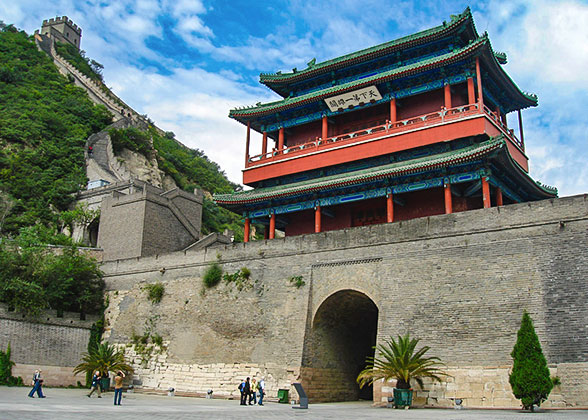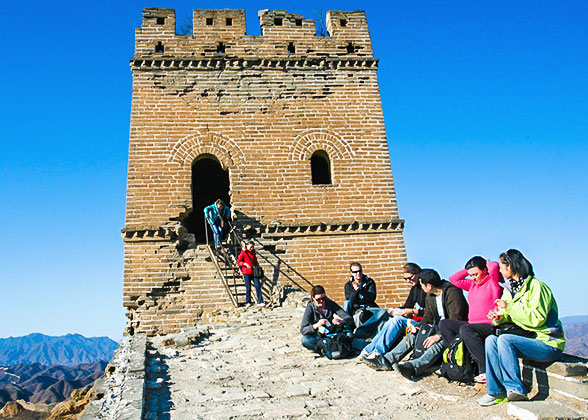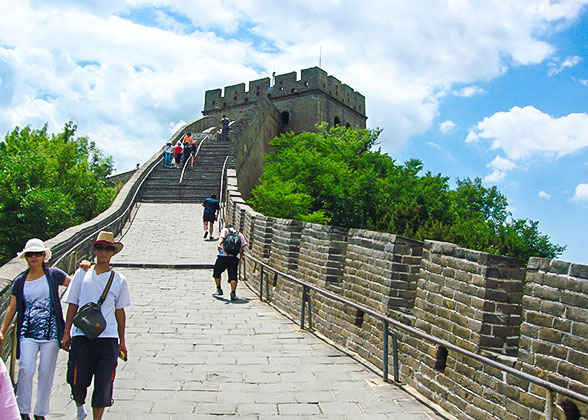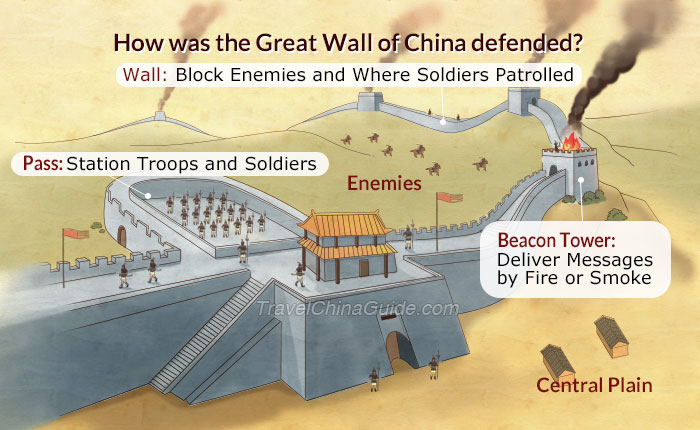In order to defend the enemies successfully, some construction units were built to form the complete and solid Great Wall of China defense system in addition to the walls, like passes to station troops and beacon towers to deliver messages when enemies approached.
Along the Great Wall of China there are many passes, where soldiers or troops used to station, like Juyongguan Pass, Shanhaiguan Pass and Jiayuguan Pass. When there was a battle, they could move via the wall to the battle site in no time. To strengthen the defensive ability of the passes, defensive towns and other military units with soldiers were set nearby.
For instance, in the Ming Dynasty (1368 – 1644 AD), there were eleven defensive towns with troops set along the Great Wall. These towns were all built with thick bricks and stones surrounded by quite high walls, which were easy to hold but hard to attack. Here is a list of troops’ distribution conditions in the Ming Dynasty.
| Defensive Units | Number of Soldiers |
| Town | 3,000 soldiers or according to the actual military conditions |
| Road Town | More than 12,000 soldiers |
| Wei Suo | 5,600 soldiers |
| Qian Hu Suo | 1,120 soldiers |
| Bai Hu Suo | 112 soldiers |
| Zong Qi | More than 50 soldiers |
| Fen Qi | About a dozen |
 | | Juyongguan Pass, Beijing | |  | | A Beacon Tower at Jinshanling Section | |
As early as in the Zhou Dynasty (1046 – 256 BC), the method of using beacon towers to deliver message were already in operation. As a primary communication media, beacon towers made a great contribution to the ancient military battles.
How were messages sent along the Great Wall?
The beacons towers were built a certain distance along the defense line, and firewood was put in the towers. These towers were usually built on relatively high sites, which were easy for the soldiers to observe the enemies’ situation. When the soldiers found the enemies moving closer, they would burn the firewood piece by piece to send military signals with fire or smoke, which could warn the troops. They usually used smoke in the day time and fire at night.
Beacon Tower Signal Rules in the Ming Dynasty:
| Day | Night | Number of Enemies |
| One smoke torch, one cannon signal | Fire torch, one cannon signal | About 100 |
| Two smoke torch, two cannon signal | Fire torch, two cannon signal | About 500 |
| Three smoke torch, three cannon signal | Fire torch, three cannon signal | About 1,000 |
| Four smoke torch, four cannon signal | Fire torch, four cannon signal | About 5,000 |
| Five smoke torch, five cannon signal | Fire torch, five cannon signal | About 10,000 |
Apart from the beacon tower signal system, there is another important post system on land along the Great Wall, which consists of post towns, delivery stations and post houses, providing accommodation and horses for the officers who deliver the messages, as well as the safe guard for the military supplies.
 |
| Wide Passage on the Wall |
How many watchtowers are on the Great Wall of China?
It is roughly estimated that there are more than 10,000 watchtowers along the Great Wall of China. The exact number is hard to figure out, since the walls were built in different periods and some sections were already destroyed.
Due to the huge length of the Great Wall of China, it is impossible to set soldiers along the every inch of it. So the soldiers usually patrolled on the top of the wall to guard the Great Wall of China. The passages on the top of the wall were usually constructed widely. During the battles, the broad passages also make a great contribution on troop’s movement and supplies’ delivery at the highest speed; also, the wall itself is a protection for soldiers from direct attack by enemies.
 Further Reading:
Further Reading:
 Military Defense System of China Great Wall
Military Defense System of China Great Wall
 Who was the Great Wall of China built to keep out?
Who was the Great Wall of China built to keep out?
 Did the Great Wall of China Work?
Did the Great Wall of China Work?
- Last updated on Jan. 15, 2024 by Brenda Lian -


![]() Further Reading:
Further Reading:![]() Military Defense System of China Great Wall
Military Defense System of China Great Wall
